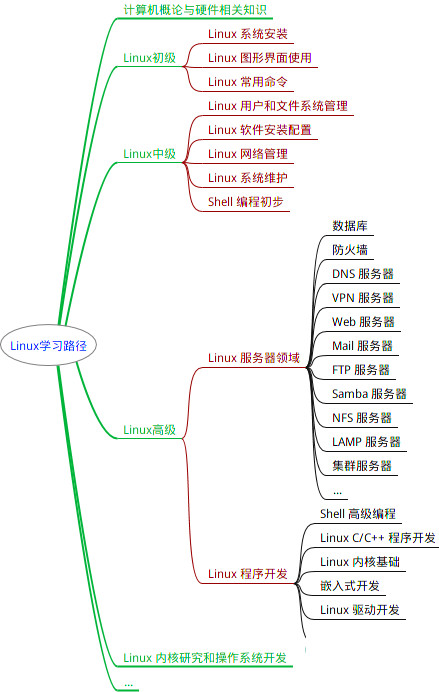网上学习资料一大堆,但如果学到的知识不成体系,遇到问题时只是浅尝辄止,不再深入研究,那么很难做到真正的技术提升。
一个人可以走的很快,但一群人才能走的更远!不论你是正从事IT行业的老鸟或是对IT行业感兴趣的新人,都欢迎加入我们的的圈子(技术交流、学习资源、职场吐槽、大厂内推、面试辅导),让我们一起学习成长!
–conf-path=PATH #在nginx.conf中没有指定pid指令的情况下,默认的nginx.pid的路径。如果没有指定,默认为 PATH/logs/nginx.pid。
–pid-path=PATH #nginx.lock文件的路径。
–lock-path=PATH #在nginx.conf中没有指定error_log指令的情况下,默认的错误日志的路径。如果没有指定,默认为 PATH/logs/error.log。
–error-log-path=PATH #在nginx.conf中没有指定access_log指令的情况下,默认的访问日志的路径。如果没有指定,默认为 PATH/logs/access.log。
–http-log-path=PATH #在nginx.conf中没有指定user指令的情况下,默认的nginx使用的用户。如果没有指定,默认为 nobody。
–user=USER #在nginx.conf中没有指定user指令的情况下,默认的nginx使用的组。如果没有指定,默认为 nobody。
–group=GROUP #指定编译的目录
–builddir=DIR #启用 rtsig 模块
–with-rtsig_module #允许或不允许开启SELECT模式,如果configure没有找到合适的模式,比如,kqueue(sun os)、epoll(linux kenel 2.6+)、rtsig(实时信号)
–with-select_module(–without-select_module) #允许或不允许开启POLL模式,如果没有合适的,则开启该模式。
–with-poll_module(–without-poll_module) #开启HTTP SSL模块,使NGINX可以支持HTTPS请求。这个模块需要已经安装了OPENSSL,在DEBIAN上是libssl-dev
–with-http_ssl_module #启用ngx_http_ssl_module
–with-http_realip_module #启用 ngx_http_realip_module
–with-http_addition_module #启用 ngx_http_addition_module
–with-http_sub_module #启用 ngx_http_sub_module
–with-http_dav_module #启用 ngx_http_dav_module
–with-http_flv_module #启用 ngx_http_flv_module
–with-http_stub_status_module #启用 “server status” 页
–without-http_charset_module #禁用 ngx_http_charset_module
–without-http_gzip_module #禁用 ngx_http_gzip_module. 如果启用,需要 zlib 。
–without-http_ssi_module #禁用 ngx_http_ssi_module
–without-http_userid_module #禁用 ngx_http_userid_module
–without-http_access_module #禁用 ngx_http_access_module
–without-http_auth_basic_module #禁用 ngx_http_auth_basic_module
–without-http_autoindex_module #禁用 ngx_http_autoindex_module
–without-http_geo_module #禁用 ngx_http_geo_module
–without-http_map_module #禁用 ngx_http_map_module
–without-http_referer_module #禁用 ngx_http_referer_module
–without-http_rewrite_module #禁用 ngx_http_rewrite_module. 如果启用需要 PCRE 。
–without-http_proxy_module #禁用 ngx_http_proxy_module
–without-http_fastcgi_module #禁用 ngx_http_fastcgi_module
–without-http_memcached_module #禁用 ngx_http_memcached_module
–without-http_limit_zone_module #禁用 ngx_http_limit_zone_module
–without-http_empty_gif_module #禁用 ngx_http_empty_gif_module
–without-http_browser_module #禁用 ngx_http_browser_module
–without-http_upstream_ip_hash_module #禁用 ngx_http_upstream_ip_hash_module
–with-http_perl_module - #启用 ngx_http_perl_module
–with-perl_modules_path=PATH #指定 perl 模块的路径
–with-perl=PATH #指定 perl 执行文件的路径
–http-log-path=PATH #Set path to the http access log
–http-client-body-temp-path=PATH #Set path to the http client request body temporary files
–http-proxy-temp-path=PATH #Set path to the http proxy temporary files
–http-fastcgi-temp-path=PATH #Set path to the http fastcgi temporary files
–without-http #禁用 HTTP server
–with-mail #启用 IMAP4/POP3/SMTP 代理模块
–with-mail_ssl_module #启用 ngx_mail_ssl_module
–with-cc=PATH #指定 C 编译器的路径
–with-cpp=PATH #指定 C 预处理器的路径
–with-cc-opt=OPTIONS #
–with-ld-opt=OPTIONS #Additional parameters passed to the linker. With the use of the system library PCRE in FreeBSD, it is necessary to indicate --with-ld-opt=“-L /usr/local/lib”.
–with-cpu-opt=CPU #为特定的CPU编译,有效的值包括:pentium, pentiumpro, pentium3, pentium4, athlon, opteron, amd64, sparc32, sparc64, ppc64
–without-pcre #禁止PCRE库的使用。同时也会禁止 HTTP rewrite 模块。在 “location” 配置指令中的正则表达式也需要 PCRE 。
–with-pcre=DIR #指定 PCRE 库的源代码的路径。
–with-pcre-opt=OPTIONS #设置PCRE的额外编译选项。
–with-md5=DIR #使用MD5汇编源码。
–with-md5-opt=OPTIONS #Set additional options for md5 building.
–with-md5-asm #Use md5 assembler sources.
–with-sha1=DIR #Set path to sha1 library sources.
–with-sha1-opt=OPTIONS #Set additional options for sha1 building.
–with-sha1-asm #Use sha1 assembler sources.
–with-zlib=DIR #Set path to zlib library sources.
–with-zlib-opt=OPTIONS #Set additional options for zlib building.
–with-zlib-asm=CPU #Use zlib assembler sources optimized for specified CPU, valid values are: pentium, pentiumpro
–with-openssl=DIR #Set path to OpenSSL library sources
–with-openssl-opt=OPTIONS #Set additional options for OpenSSL building
–with-debug #启用调试日志
–add-module=PATH #Add in a third-party module found in directory PATH
**启动nginx**
[root@linuxprobe nginx-1.10.1]# /usr/local/nginx/sbin/nginx
[root@linuxprobe nginx-1.10.1]# netstat -antup | grep nginx
tcp 0 0 0.0.0.0:80 0.0.0.0:* LISTEN 52553/nginx
**测试是否隐藏了版本和软件名**
[root@linuxprobe nginx-1.10.1]# cd
[root@linuxprobe ~]# curl -I http://127.0.0.1

错误代码测试(尽量使用firefox或者类360浏览器)
**Nginx运行用户**
[root@linuxprobe~]# useradd -M -s /sbin/nologin nginx //修改nginx默认运行用户
[root@linuxprobe ~]# ps -aux | grep nginx //默认是nobody用户
nobody 52554 0.0 0.1 22660 1568 ? S 14:39 0:00 nginx: worker process
[root@linuxprobe ~]# vim /usr/local/nginx/conf/nginx.conf
user nginx;
[root@linuxprobe ~]# /usr/local/nginx/sbin/nginx -s reload
[root@linuxprobe ~]# ps -aux | grep nginx
nginx 52555 0.0 0.1 22660 1568 ? S 14:39 0:00 nginx: worker process
在这里我们还可以看到在查看的时候,work进程是nginx用户了,但是master进程还是root
其中,master是监控进程,也叫主进程,work是工作进程,部分还有cache相关进程,关系如图:

所以我们可以master监控进程使用root,可以是降级使用普通用户,如果都是用普用户,注意编译安装的时候,是用普通用户执行,sudo方式操作!可以直接理解为master是管理员,work进程才是为用户提供服务的!
Nginx运行进程个数,一般我们设置CPU的核心或者核心数x2,如果你不了解,top命令之后按1也可以看出来(一般直接追到线程即可)
[root@linuxprobe ~]# vim /usr/local/nginx/conf/nginx.conf
worker_processes 2;
[root@linuxprobe ~]# /usr/local/nginx/sbin/nginx -s reload
[root@linuxprobe ~]# ps -axu | grep nginx
nginx 52686 0.0 0.1 22668 1300 ? S 15:10 0:00 nginx: worker process
nginx 52687 0.0 0.1 22668 1376 ? S 15:10 0:00 nginx: worker process
**Nginx运行CPU亲和力**(这个要根据你的CPU线程数配置)
比如4核4线程配置
[root@linuxprobe ~]# vim /usr/local/nginx/conf/nginx.conf
worker_processes 4;
worker_cpu_affinity 0001 0010 0100 1000;
比如8核8线程配置
worker_processes 8;
worker_cpu_affinity 00000001 00000010 00000100 00001000 00010000 00100000 01000000 10000000;
那么如果我是4线程的CPU,我只想跑两个进程呢?
worker_processes 2;
worker_cpu_affinity 0101 1010;
意思就似乎我开启了第一个和第三个内核,第二个和第四个内核,两个进程分别在这两个组合上轮询!worker\_processes最多开启8个,8个以上性能提升不会再提升了,而且稳定性变得更低,所以8个进程够用了。
Nginx最多可以打开文件数 worker\_rlimit\_nofile 65535;
这个指令是指当一个nginx进程打开的最多文件描述符数目,理论值应该是最多打开文件数(ulimit -n)与nginx进程数相除,但是nginx分配请求并不是那么均匀,所以最好与ulimit -n的值保持一致。
Nginx事件处理模型
events {
use epoll;
worker_connections 1024;
}
知道在linux下nginx采用epoll事件模型,处理效率高,关于epoll的时间处理其他只是,可以自行百度,了解即可!
Work\_connections是单个进程允许客户端最大连接数,这个数值一般根据服务器性能和内存来制定,也就是单个进程最大连接数,实际最大值就是work进程数乘以这个数,如何设置,可以根据设置一个进程启动所占内存,top -u nginx,但是实际我们填入一个65535,足够了,这些都算并发值,一个网站的并发达到这么大的数量,也算一个大站了!
开启高效传输模式
http {
include mime.types;
default_type application/octet-stream;
……
sendfile on;
#tcp_nopush on;
……
Include mime.types; 媒体类型
default_type application/octet-stream; 默认媒体类型足够
sendfile on; 开启高效文件传输模式,sendfile指令指定nginx是否调用sendfile函数来输出文件,对于普通应用设为 on,如果用来进行下载等应用磁盘IO重负载应用,可设置为off,以平衡磁盘与网络I/O处理速度,降低系统的负载。注意:如果图片显示不正常把这个改成off。
tcp_nopush on; 必须在sendfile开启模式才有效,防止网路阻塞,积极的减少网络报文段的数量
**连接超时时间**
主要目的是保护服务器资源,CPU,内存,控制连接数,因为建立连接也是需要消耗资源的,TCP的三次握手四次挥手等,我们一般断掉的是那些建立连接但是不做事儿,也就是我建立了链接开始,但是后续的握手过程没有进行,那么我们的链接处于等待状态的,全部断掉!
同时我们也希望php建议短链接,消耗资源少
Java建议长链接,消耗资源少
keepalive_timeout 60;
tcp_nodelay on;
client_header_timeout 15;
client_body_timeout 15;
send_timeout 15;
keepalived_timeout 客户端连接保持会话超时时间,超过这个时间,服务器断开这个链接
tcp_nodelay;也是防止网络阻塞,不过要包涵在keepalived参数才有效
client_header_timeout 客户端请求头读取超时时间,如果超过这个时间没有发送任何数据,nginx将返回request time out的错误
client_body_timeout 客户端求主体超时时间,超过这个时间没有发送任何数据,和上面一样的错误提示
send_timeout 响应客户端超时时间,这个超时时间仅限于两个活动之间的时间,如果超哥这个时间,客户端没有任何活动,nginx关闭连接
**文件上传大小限制**
我们知道PHP可以修改上传文件大小限制,nginx也可以修改
http {
……
client_max_body_size 10m;
**Fastcgi调优**
Nginx没有配置factcgi,你使用nginx是一个失败的方法,配置之前。了解几个概念:
Cache: 写入缓存区
Buffer: 读取缓存区
Fastcgi 是静态服务和动态服务的一个接口
fastcgi_connect_timeout 300; #指定链接到后端FastCGI的超时时间。
fastcgi_send_timeout 300; #向FastCGI传送请求的超时时间,这个值是指已经完成两次握手后向FastCGI传送请求的超时时间。
fastcgi_read_timeout 300; #指定接收FastCGI应答的超时时间,这个值是指已经完成两次握手后接收FastCGI应答的超时时间。
fastcgi_buffer_size 64k; #指定读取FastCGI应答第一部分需要用多大的缓冲区,这个值表示将使用1个64KB的缓冲区读取应答的第一部分(应答头),可以设置为gastcgi_buffers选项指定的缓冲区大小。
fastcgi_buffers 4 64k; #指定本地需要用多少和多大的缓冲区来缓冲FastCGI的应答请求,如果一个php脚本所产生的页面大小为256KB,那么会分配4个64KB的缓冲区来缓存,如果页面大小大于256KB,那么大于256KB的部分会缓存到fastcgi_temp指定的路径中,但是这并不是好方法,因为内存中的数据处理速度要快于磁盘。一般这个值应该为站点中php脚本所产生的页面大小的中间值,如果站点大部分脚本所产生的页面大小为256KB,那么可以把这个值设置为“8 16K”、“4 64k”等。
fastcgi_busy_buffers_size 128k; #建议设置为fastcgi_buffer的两倍,繁忙时候的buffer
fastcgi_temp_file_write_size 128k; #在写入fastcgi_temp_path时将用多大的数据库,默认值是fastcgi_buffers的两倍,设置上述数值设置小时若负载上来时可能报502Bad Gateway
fastcgi_cache aniu_ngnix; #表示开启FastCGI缓存并为其指定一个名称。开启缓存非常有用,可以有效降低CPU的负载,并且防止502的错误放生,但是开启缓存也可能会引起其他问题,要很据具体情况选择
fastcgi_cache_valid 200 302 1h; #用来指定应答代码的缓存时间,实例中的值表示将2000和302应答缓存一小时,要和fastcgi_cache配合使用
fastcgi_cache_valid 301 1d; #将301应答缓存一天
fastcgi_cache_valid any 1m; #将其他应答缓存为1分钟
fastcgi_cache_min_uses 1; #请求的数量
fastcgi_cache_path #定义缓存的路径
修改nginx.conf配置文件,在http标签中添加如下:
fastcgi_connect_timeout 300;
fastcgi_send_timeout 300;
fastcgi_read_timeout 300;
fastcgi_buffer_size 64k;
fastcgi_buffers 4 64k;
fastcgi_busy_buffers_size 128k;
fastcgi_temp_file_write_size 128k;
#fastcgi_temp_path /data/ngx_fcgi_tmp;
fastcgi_cache_path /opt/ngx_fcgi_cache levels=2:2
keys_zone=ngx_fcgi_cache:512m
inactive=1d max_size=40g;
缓存路径,levels目录层次2级,定义了一个存储区域名字,缓存大小,不活动的数据在缓存中多长时间,目录总大小
在server location标签添加如下:
location ~ .*.(php|php5)?$
{
fastcgi_pass 127.0.0.1:9000;
fastcgi_index index.php;
include fastcgi.conf;
fastcgi_cache ngx_fcgi_cache;
fastcgi_cache_valid 200 302 1h;
fastcgi_cache_valid 301 1d;
fastcgi_cache_valid any 1m;
fastcgi_cache_min_uses 1;
fastcgi_cache_use_stale error timeout invalid_header http_500;
fastcgi_cache_key http://
h
o
s
t
host
hostrequest_uri;
}
fastcgi cache官方文档:http://nginx.org/en/docs/http/ngx\_http\_fastcgi\_module.html#fastcgi\_cache
**gzip调优**
使用gzip压缩功能,可能为我们节约带宽,加快传输速度,有更好的体验,也为我们节约成本,所以说这是一个重点
Nginx启用压缩功能需要你来ngx\_http\_gzip\_module模块,apache使用的是mod\_deflate
一般我们需要压缩的内容有:文本,js,html,css,对于图片,视频,flash什么的不压缩,同时也要注意,我们使用gzip的功能是需要消耗CPU的!
gzip on; #开启压缩功能
gzip_min_length 1k; #设置允许压缩的页面最小字节数,页面字节数从header头的Content-Length中获取,默认值是0,不管页面多大都进行压缩,建议设置成大于1K,如果小与1K可能会越压越大。
gzip_buffers 4 32k; #压缩缓冲区大小,表示申请4个单位为32K的内存作为压缩结果流缓存,默认值是申请与原始数据大小相同的内存空间来存储gzip压缩结果。
gzip_http_version 1.1; #压缩版本(默认1.1,前端为squid2.5时使用1.0)用于设置识别HTTP协议版本,默认是1.1,目前大部分浏览器已经支持GZIP解压,使用默认即可
gzip_comp_level 9; #压缩比例,用来指定GZIP压缩比,1压缩比最小,处理速度最快,9压缩比最大,传输速度快,但是处理慢,也比较消耗CPU资源。
gzip_types text/css text/xml application/javascript; #用来指定压缩的类型,‘text/html’类型总是会被压缩。
gzip_vary on; #vary header支持,改选项可以让前端的缓存服务器缓存经过GZIP压缩的页面,例如用Squid缓存经过nginx压缩的数据
那么配置压缩的过程中,会有一下参数
gzip on;
gzip_min_length 1k;
gzip_buffers 4 32k;
gzip_http_version 1.1;
gzip_comp_level 9;
gzip_types text/plain application/javascript application/x-javascript text/javascript text/css application/xml application/xml+rss;
gzip_vary on;
gzip_proxied expired no-cache no-store private auth;
gzip_disable “MSIE [1-6].”;
**expires缓存调优**
缓存,主要针对于图片,css,js等元素更改机会比较少的情况下使用,特别是图片,占用带宽大,我们完全可以设置图片在浏览器本地缓存365d,css,js,html可以缓存个10来天,这样用户第一次打开加载慢一点,第二次,就非常快乐!缓存的时候,我们需要将需要缓存的拓展名列出来!
Expires缓存配置在server字段里面
location ~ ..(gif|jpg|jpeg|png|bmp|swf)$
{
expires 3650d;
}
location ~ ..(js|css)?$
{
expires 30d;
}
同时也可以对目录及其进行判断:
location ~ ^/(images|javascript|js|css|flash|media|static)/ {
expires 360d;
}
location ~(robots.txt) {
expires 7d;
break;
}
**expire功能优点**
(1)expires可以降低网站购买的带宽,节约成本
(2)同时提升用户访问体验
(3)减轻服务的压力,节约服务器成本,甚至可以节约人力成本,是web服务非常重要的功能。
expire功能缺点:
被缓存的页面或数据更新了,用户看到的可能还是旧的内容,反而影响用户体验。
解决办法:
第一个 缩短缓存时间,例如:1天,不彻底,除非更新频率大于1天
第二个 对缓存的对象改名
a.图片,附件一般不会被用户修改,如果用户修改了,实际上也是更改文件名重新传了而已
b.网站升级对于js,css元素,一般可以改名,把css,js,推送到CDN。
网站不希望被缓存的内容
1)广告图片
2)网站流量统计工具
3)更新频繁的文件(google的logo)
[root@linuxprobe ~]# cd /usr/local/nginx/logs/
日志优化的目的,是为了一天日志一压缩,焚天存放,超过10天的删除
**创建日志切割脚本**
//每天日志分割脚本
[root@linuxprobe logs]# vim cut_nginx_log.sh
#!/bin/bash
######################################
#function:cut nginx log files
#author: shaon
######################################
#set the path to nginx log files
log_files_path=“/usr/local/nginx/logs”
log_files_dir=
l
o
g
f
i
l
e
s
p
a
t
h
/
{log_files_path}/
logfilespath/(date -d “yesterday” +“%Y”)/
(
d
a
t
e
−
d
"
y
e
s
t
e
r
d
a
y
"
+
"
l
o
g
f
i
l
e
s
d
i
r
=
(date -d "yesterday" +"%m") log_files_dir=
(date−d"yesterday"+"logfilesdir={log_files_path}/
(
d
a
t
e
−
d
"
y
e
s
t
e
r
d
a
y
"
+
"
(date -d "yesterday" +"%Y")/
(date−d"yesterday"+"(date -d “yesterday” +“%m”)
#set nginx log files you want to cut
log_files_name=(access error)
#set the path to nginx.
nginx_sbin=“/usr/local/nginx/sbin/nginx”
#Set how long you want to save
save_days=30
############################################
#Please do not modify the following script #
############################################
mkdir -p
l
o
g
f
i
l
e
s
d
i
r
l
o
g
f
i
l
e
s
n
u
m
=
log_files_dir log_files_num=
logfilesdirlogfilesnum={#log_files_name[@]}
#cut nginx log files
for((i=0;i<$log_files_num;i++));do
mv
l
o
g
f
i
l
e
s
p
a
t
h
/
{log_files_path}/
logfilespath/{log_files_name[i]}.log
l
o
g
f
i
l
e
s
d
i
r
/
{log_files_dir}/
logfilesdir/{log_files_name[i]}_$(date -d “yesterday” +“%Y%m%d”).log
done ays -exec rm -rf {}
#delete 30 days ago nginx log files
find
l
o
g
f
i
l
e
s
p
a
t
h
−
m
t
i
m
e
+
log_files_path -mtime +
logfilespath−mtime+save_days -exec rm -rf {} ;
健康检查的日志,不输入到log中,这些日志没有意义,我们分析的话只需要分析访问日志,看看一些页面链接,如200,301,404的状态吗,在SEO中很重要,而且我们统计PV是页面计算,这些都没有意义,反而消耗了磁盘IO,降低了服务器性能,我们可以屏蔽这些如图片,js,css这些不宜变化的内容
[root@linuxprobe ~]# vim /usr/local/nginx/conf/nginx.conf
location ~ .*.(js|jpg|jpeg|JPG|JPEG|css|bmp|gif|GIF)$ {
access_log off;
}
**日志目录权限优化**
[root@linuxprobe ~]# chown -R root:root /usr/local/nginx/logs
[root@linuxprobe ~]# chmod 700 /usr/local/nginx/logs
**日志格式优化**
#vim /usr/local/nginx/conf/nginx.conf
log_format access ‘$remote_addr –
r
e
m
o
t
e
u
s
e
r
[
remote_user [
remoteuser[time_local] “
r
e
q
u
e
s
t
”‘‘
request” ‘‘
request”‘‘status
b
o
d
y
b
y
t
e
s
s
e
n
t
“
body_bytes_sent “
bodybytessent“http_referer” ‘‘”$http_user_agent” $http_x_forwarded_for’;
其中,各个字段的含义如下:
1.
r
e
m
o
t
e
a
d
d
r
与
remote_addr 与
remoteaddr与http_x_forwarded_for 用以记录客户端的ip地址;
2.
r
e
m
o
t
e
u
s
e
r
:用来记录客户端用户名称;
3.
remote_user : 用来记录客户端用户名称; 3.
remoteuser:用来记录客户端用户名称;3.time_local : 用来记录访问时间与时区;
4.
r
e
q
u
e
s
t
:用来记录请求的
u
r
l
与
h
t
t
p
协议;
5.
request : 用来记录请求的url与http协议; 5.
request:用来记录请求的url与http协议;5.status : 用来记录请求状态;成功是200,
6.
b
o
d
y
b
y
t
e
s
s
e
n
t
:记录发送给客户端文件主体内容大小;
7.
body_bytes_s ent :记录发送给客户端文件主体内容大小; 7.
bodybytessent:记录发送给客户端文件主体内容大小;7.http_referer : 用来记录从那个页面链接访问过来的;
8.$http_user_agent : 记录客户端浏览器的相关信息;
**目录文件访问控制**
主要用在禁止目录下指定文件被访问,当然也可以禁止所有文件被访问!一般什么情况下用?比如是有存储共享,这些文件本来都只是一下资源文件,那么这些资源文件就不允许被执行,如sh.py,pl,php等等
例如:禁止访问images下面的php程序文件
location ~ ^/images/.*.(php|php5|.sh|.py|.py)$ {
deny all;
}
[root@linuxprobe ~]# /usr/local/nginx/sbin/nginx -s reload
[root@linuxprobe ~]# mkdir /usr/local/nginx/html/images
[root@linuxprobe ~]# echo “” > /usr/local/nginx/html/images/index.php
测试访问

**多目录组合配置方法**
location ~ ^/images/(attachment|avatar)/.*.(php|php5|.sh|.py|.py)$ {
deny all;
}
**配置nginx禁止访问\*.txt文件**
[root@linuxprobe ~]# echo “hello,linuxprobe” > /usr/local/nginx/html/test.txt

**配置规则,禁止访问**
[root@linuxprobe ~]# vim /usr/local/nginx/conf/nginx.conf //server字段中
location ~* .(txt|doc)$ {
if ( -f $request_filename) {
root /usr/local/nginx/html;
break;
}
deny all;
}
[root@linuxprobe ~]# /usr/local/nginx/sbin/nginx -s reload

**当然,可以重定向到某一个URL**
[root@linuxprobe ~]# vim /usr/local/nginx/conf/nginx.conf
location ~* .(txt|doc)$ {
if ( -f KaTeX parse error: Expected '}', got 'EOF' at end of input: … rewrite ^/(.*) http://www.linuxprobe.com last;
break;
}
}
**对目录进行限制的方法**
[root@linuxprobe ~]# mkdir -p /usr/local/nginx/html/{linuxprobe,1mcloud}
[root@linuxprobe ~]# echo linuxprobe > /usr/local/nginx/html/linuxprobe/index.html
[root@linuxprobe ~]# echo 1mcloud > /usr/local/nginx/html/1mcloud/index.html
[root@linuxprobe ~]# vim /usr/local/nginx/conf/nginx.conf
location /linuxprobe/ { return 404 ; }
location /1mcloud/ { return 403 ; }
测试返回结果

最全的Linux教程,Linux从入门到精通
======================
1. **linux从入门到精通(第2版)**
2. **Linux系统移植**
3. **Linux驱动开发入门与实战**
4. **LINUX 系统移植 第2版**
5. **Linux开源网络全栈详解 从DPDK到OpenFlow**

第一份《Linux从入门到精通》466页
====================
内容简介
====
本书是获得了很多读者好评的Linux经典畅销书**《Linux从入门到精通》的第2版**。本书第1版出版后曾经多次印刷,并被51CTO读书频道评为“最受读者喜爱的原创IT技术图书奖”。本书第﹖版以最新的Ubuntu 12.04为版本,循序渐进地向读者介绍了Linux 的基础应用、系统管理、网络应用、娱乐和办公、程序开发、服务器配置、系统安全等。本书附带1张光盘,内容为本书配套多媒体教学视频。另外,本书还为读者提供了大量的Linux学习资料和Ubuntu安装镜像文件,供读者免费下载。

**本书适合广大Linux初中级用户、开源软件爱好者和大专院校的学生阅读,同时也非常适合准备从事Linux平台开发的各类人员。**
> 需要《Linux入门到精通》、《linux系统移植》、《Linux驱动开发入门实战》、《Linux开源网络全栈》电子书籍及教程的工程师朋友们劳烦您转发+评论
**网上学习资料一大堆,但如果学到的知识不成体系,遇到问题时只是浅尝辄止,不再深入研究,那么很难做到真正的技术提升。**
**[需要这份系统化的资料的朋友,可以点击这里获取!](https://bbs.csdn.net/forums/4f45ff00ff254613a03fab5e56a57acb)**
**一个人可以走的很快,但一群人才能走的更远!不论你是正从事IT行业的老鸟或是对IT行业感兴趣的新人,都欢迎加入我们的的圈子(技术交流、学习资源、职场吐槽、大厂内推、面试辅导),让我们一起学习成长!**






















 2467
2467

 被折叠的 条评论
为什么被折叠?
被折叠的 条评论
为什么被折叠?








